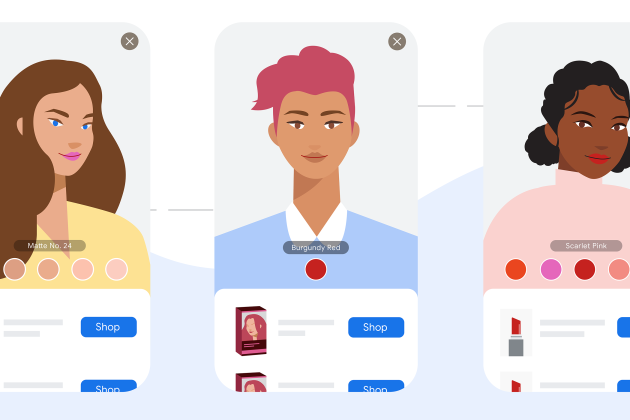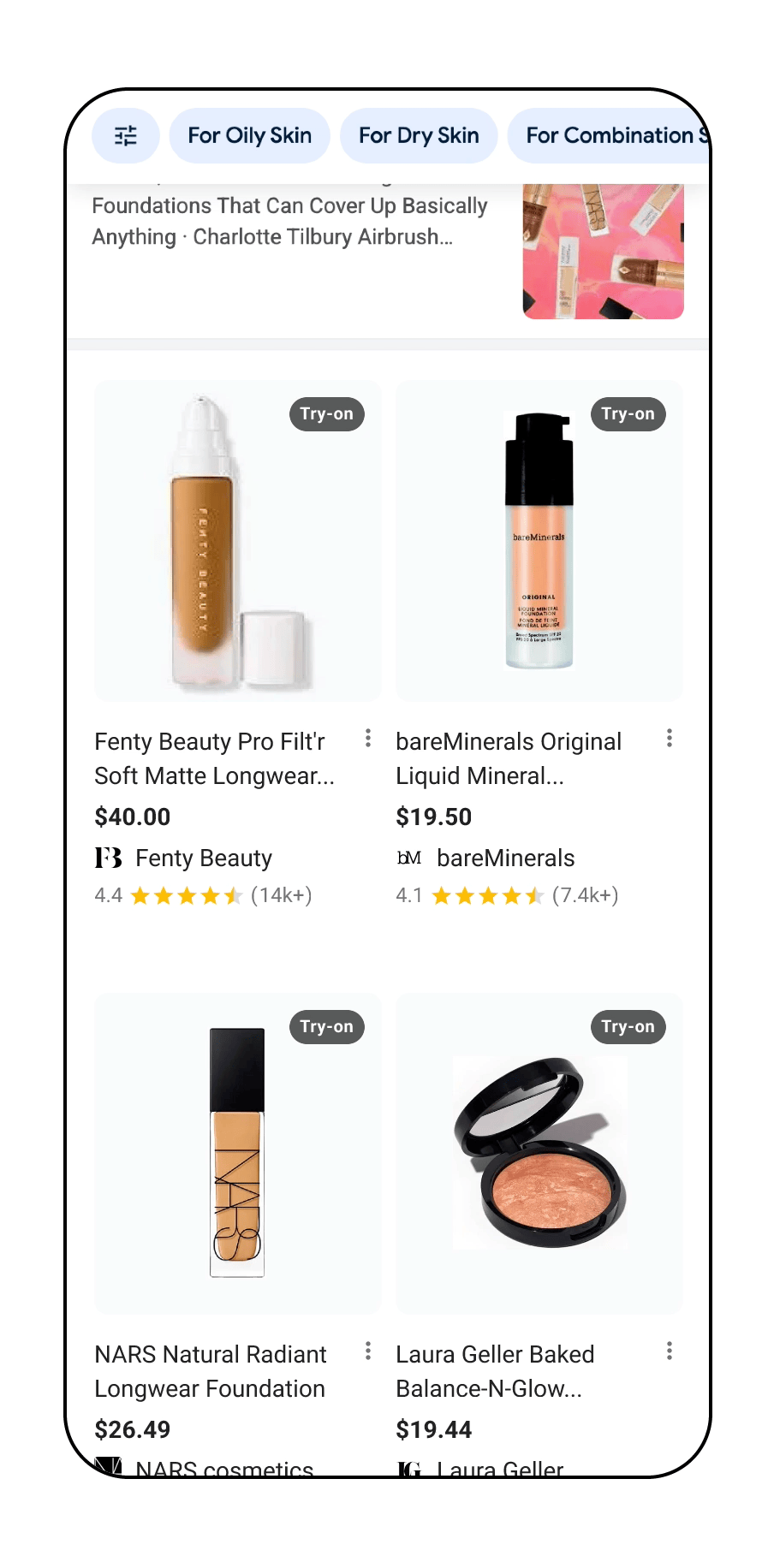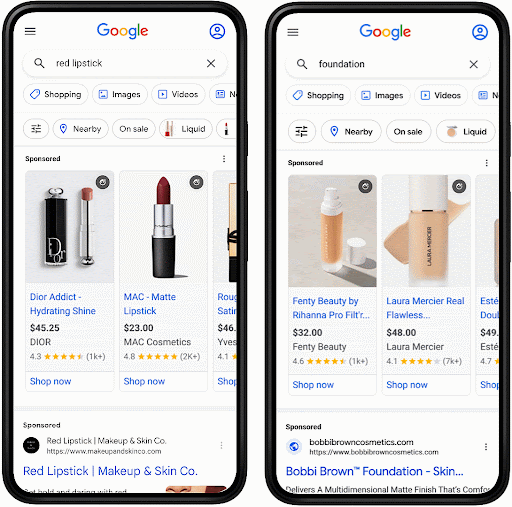Google’s Beauty AR Adds Hair Color, Foundation Try-ons, Ads

On Wednesday, Google expanded its suite of augmented reality tools for beauty with new virtual hair-color and foundation try-ons, while giving brands more to ponder with AR ads to promote products.
The hair color try-ons kick off with a range of shades from L’Oréal brands, but will grow soon with the addition of Splat, Revlon and others. Consumers can sport the digital ‘dos themselves or check them out on models that share similar characteristics. Likewise for foundation.
More from WWD
The latter pays off last year’s launch of Google’s foundation-match tool, an experience that allowed users to choose from a library of 148 models representing a wide array of skin tones, ages, genders, face shapes, ethnicities and skin types. The latest augmented reality update lets shoppers try on the digital makeup themselves by searching for a foundation type or name, selecting a product and choosing the “try on” option.
“I’m half Chinese, half Spanish, so for me in particular, I feel like these products are incredibly helpful, just because of my skin color and etc.,” Lilian Rincon, senior director of product at Google Shopping, told WWD.
She casts the new features as the latest chapter in a strategy that began three years ago, when Google first unveiled beauty AR tools for lip color and eye shadow in 2020.
“We introduced [them] to really help shoppers easily and confidently find the right products,” she continued. “And we’ve continued introducing new features, and that use a range of tech from AR to AI to bring these experiences to life.”

Notably, the announcement arrives on the heels of parent company Alphabet’s latest earnings report — which should have been cause for celebration, given the enormous ad revenues that beat expectations.
Unfortunately for the search giant, $76.7 billion in revenue, a jump of 11 percent over last year, and ad revenue of almost $60 billion, a growth of 9 percent, were not enough to stop a major one-day plummet in shares. The stock dropped 9.8 percent, likely due to investors’ disappointment that artificial intelligence didn’t drive more explosive growth, particularly at Google Cloud, or pad Google’s projected operating margin.
Earnings and revenue aren’t part of Rincon’s purview, and neither is Google’s cloud business, but AI is no less influential to her work at Google Shopping. Earlier this year, she noted, her team unveiled generative AI-powered virtual try-ons for apparel, and the tech elevates AR for areas like hair, which is instrumental to the new features.
“We partnered with hair-dye manufacturers to develop the rendering code for each shade,” explained Rincon, adding that the rendering code is what determines the hair color when AR is applied. “We also developed a custom ML [machine learning] model for this feature that focuses specifically on hair.” The ML model, which includes 10,000 data points of modern hairstyles, ensures that the AR tech can accurately identify hair in an image.

AI is clearly important to Google in multiple ways, but at Google Shopping, it’s entwined with AR or at least may constitute twin priorities. If so, the timing seems particularly apt these days, given Snap Inc.’s recent decision to step away from its enterprise AR ambitions.
Meanwhile, Google has been pushing forward, expanding the categories for virtual try-ons and bringing it to more places, including the real world. Last weekend, it cohosted a pop-up event with Pat McGrath Labs in New York City so consumers could check out the physical products or try on the digital versions in the mobile app, which is now bursting with AR for more than 50 brands.
Rincon noted that in the last six months alone, the list has ballooned to include Pat McGrath, Cover Girl, Dior Beauty, Fenty Beauty, Laura Mercier, Makeup by Mario and many others. The company has also opened up to accept AR assets from a range of data providers, such as PulpoAR and Perfect Corp.
As the incoming pipeline of participating brands, data and assets widens, access to the consumer experience is also fanning out, with the company also launching virtual beauty try-ons in mobile web browsers in the U.S. In practical terms, that means anyone with a smartphone can view the experience, no app download needed. Hair color and foundation are first up, with lip and eye makeup coming soon.
Google’s beauty AR effort is growing in another important way: Ads.
According to internal company data, Google Shoppers are 10 percent more likely to interact with beauty products when presented with AR features. Now, beauty advertisers have a new way to prove that to themselves, with Google officially rolling out an option that allows brands to place virtual try-ons in place of featured product images. In contrast to the mobile web expansion, lip and eye makeup try-ons will be available first, with foundation to follow.

Best of WWD

